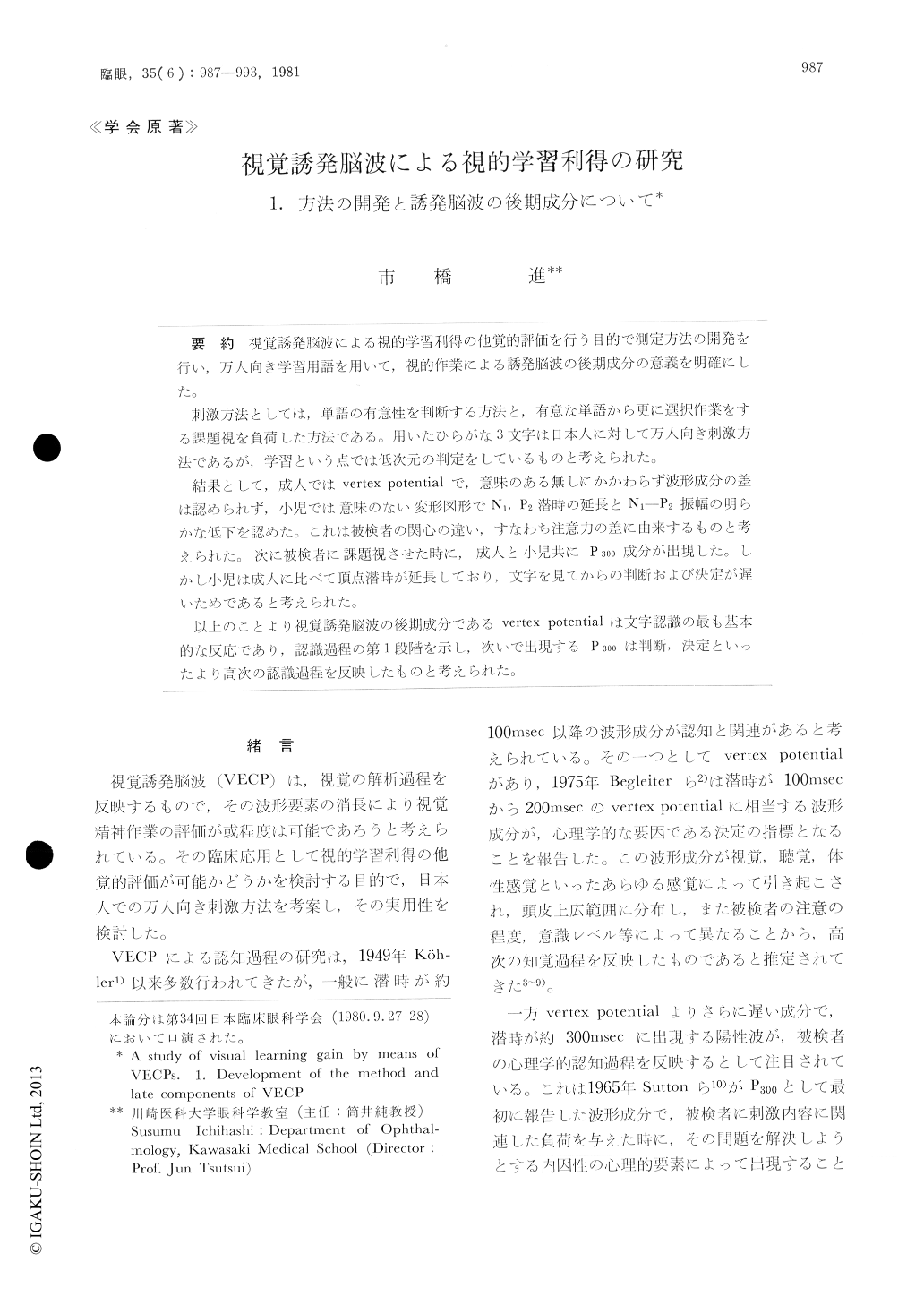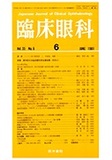Japanese
English
- 有料閲覧
- Abstract 文献概要
- 1ページ目 Look Inside
視覚誘発脳波による視的学習利得の他覚的評価を行う目的で測定方法の開発を行い,万人向き学習用語を用いて,視的作業による誘発脳波の後期成分の意義を明確にした。
刺激方法としては,単語の有意性を判断する方法と,有意な単語から更に選択作業をする課題視を負荷した方法である。用いたひらがな3文字は日本人に対して万人向き刺激方法であるが,学習という点では低次元の判定をしているものと考えられた。
結果として,成人ではvertex potentialで,意味のある無しにかかわらず波形成分の差は認められず,小児では意味のない変形図形でN1,P2潜時の延長とN1—P2振幅の明らかな低下を認めた。これは被検者の関心の違い,すなわち注意力の差に由来するものと考えられた。次に被検者に課題視させた時に,成人と小児共にP300成分が出現した。しかし小児は成人に比べて頂点潜時が延長しており,文字を見てからの判断および決定が遅いためであると考えられた。
以上のことより視覚誘発脳波の後期成分であるvertex potentialは文字認識の最も基本的な反応であり,認識過程の第1段階を示し,次いで出現するP300は判断,決定といったより高次の認識過程を反映したものと考えられた。
Vertex potential (P200) and late positive com-ponent (P300) of visual evoked cortical potentials (VECPs) to the meaningful or meaningless words on a video TV-screen were recorded from normal adults (age 20-32 years) and children (age 7-12 years). The VECPs were examined in two situa-tions : In condition 1, the effect of the meaningful words (in 3 hiragana letters) and of the meaning-less ones (in geometric letters) on the VECPs with-out a psychological task were studied. In condition 2, the effects of the meaningful words on VECPs without and with the task were compared.

Copyright © 1981, Igaku-Shoin Ltd. All rights reserved.


